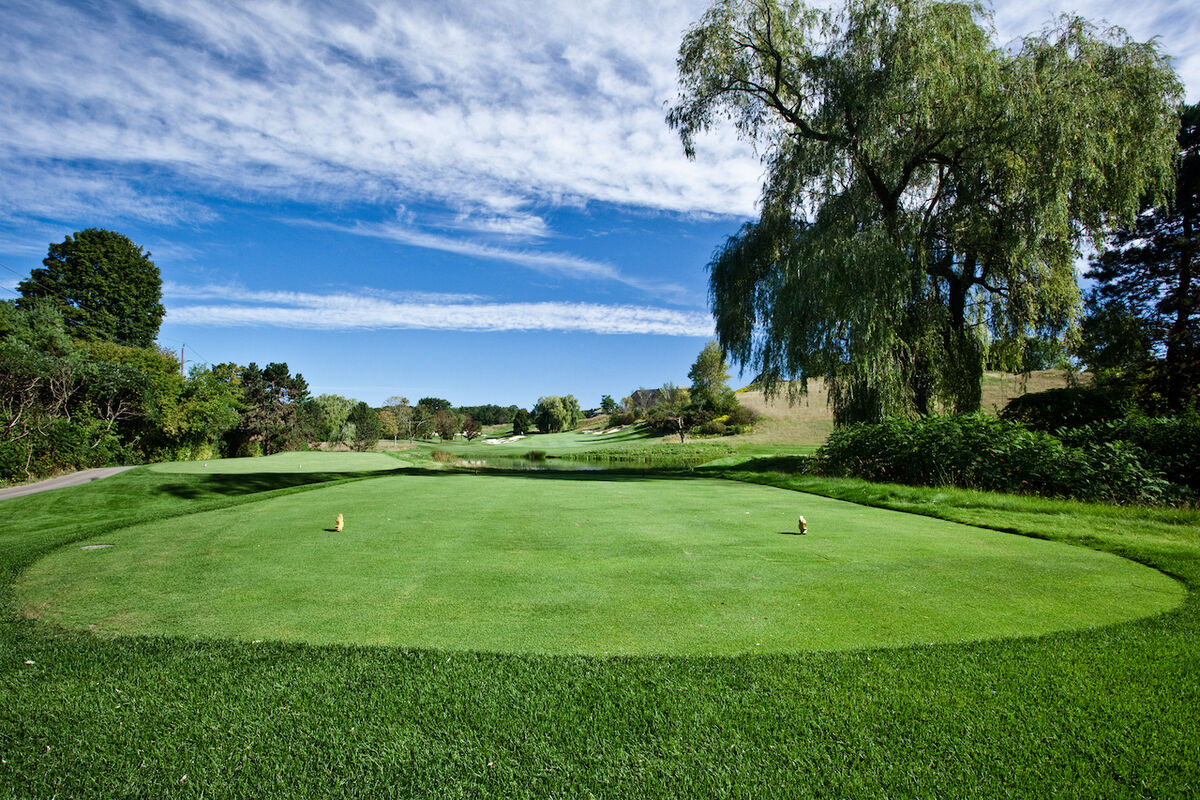What is the Tee Box in Golf?

If you think a tee box is just a tee box, think again. The tee box, and within it, the all-important teeing area, is a place golfers arrive with unadulterated hope. In fact, the teeing area is so important that it has its own official definition and set of rules.
Knowledge is power, and knowing every granular detail about what you can and cannot do on the tee box just may come in handy someday.
Tee Box and Teeing Area
For starters, let’s square away exactly what the tee box and teeing area are because they are two different things and the terms should not be used interchangeably.
The tee box is the closely mown area that encompasses tee markers, and its boundaries are set by the cut of the grass. The teeing area is the portion you are allowed to tee your ball, and its boundaries are set by the tee markers.
Officially, the teeing area is defined by the USGA as a “rectangle that is two club-lengths deep where the front edge is defined by the line between the forward-most points of two tee-markers set by the Committee, and the side edges are defined by the lines back from the outside points of the tee-markers.”
In simpler terms, you can tee your ball up anywhere from the front of the tee markers to two club-lengths back, keeping it inside the width of the markers.
Golf Tee Box Rules You Must know
Think of the teeing area as its own country with laws its citizens must abide by. These are some of the most important laws to know.
Two-Club Lengths
You can tee it up up to two club-lengths behind the front of the tee markers, but never in front.
In stroke play, the penalty for playing from outside this area is two strokes. In match play, however, there is no penalty, but your opponent has the option to cancel your shot and make you replay, according to USGA Rule 6.1b(1).
Re-Tee For Free
Hopefully, you won’t need to use this one, but it’s still good to know that you can tee up any ball in play in the teeing area after a stroke. This could be the result of a swing and a miss, a dribbler that doesn’t exit the teeing area, or after taking relief.
Where to Stand?
You can stand outside the teeing area as long as your ball is inside the teeing area. If you really want to push the boundaries, it’s worth noting that as long as any part of your ball, even the tiniest sliver of the edge, is inside the teeing area, your ball is considered to be inside.
Something Borrowed
You are allowed to use a borrowed golf tee. Abandoned tees are fair game as well.
No Need for a Mulligan
If your ball falls off the tee before you intentionally put it in play, you can re-tee without penalty. In fact, at this point, you can even move your tee within the teeing area or change balls.
Which Tees Should You Play?
There are no rules on which tee box to play, and despite what you’re likely to hear in the grille room or 19th hole, tees are indiscriminate of age and gender. Golfers are free to play from whichever set they want to, unless they’re playing in a tournament, in which case the Committee will dictate the tees.
However, you should always keep in mind the impact of your decision. Playing from tees that make the course too long for your skillset will add time to and likely suck the fun from your round. To help guide you, the USGA offers some suggestions for selecting the appropriate tees.
The first suggestion is to multiply your average drive distance by 28 and play the tees that most closely represent that yardage. If your average drive is 225 yards, look for tees that play around 6,300 yards. If you employ this method, be honest about your average drive distance. Multiplying the longest drive you’ve ever hit by 28 is not going to lead to more birdies, a quicker round, or more fun.
The USGA and PGA of America also created the following Tee It Forward chart to recommend 18-hole course yardage based on average drive distance.
| Driver Distance | Recommended Yardage |
| 275 | 6,700-6,900 |
| 250 | 6,200-6,400 |
| 225 | 5,800-6,000 |
| 200 | 5,200-5,400 |
| 175 | 4,400-4,600 |
| 150 | 3,500-3,700 |
| 125 | 2,800-3,000 |
| 100 | 2,100-2,300 |
Bottom Line
Many golfers take the tee box and teeing area for granted. However, knowing the rules in this oh-so-important area of the golf course just may come in handy. The next time you step inside the borders of the teeing area, you’ll arrive with hope and some extra knowledge.